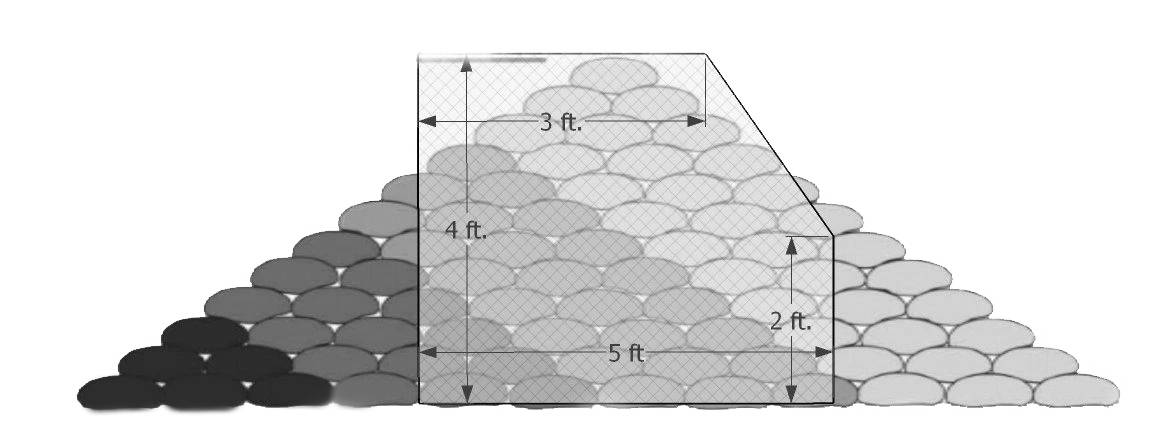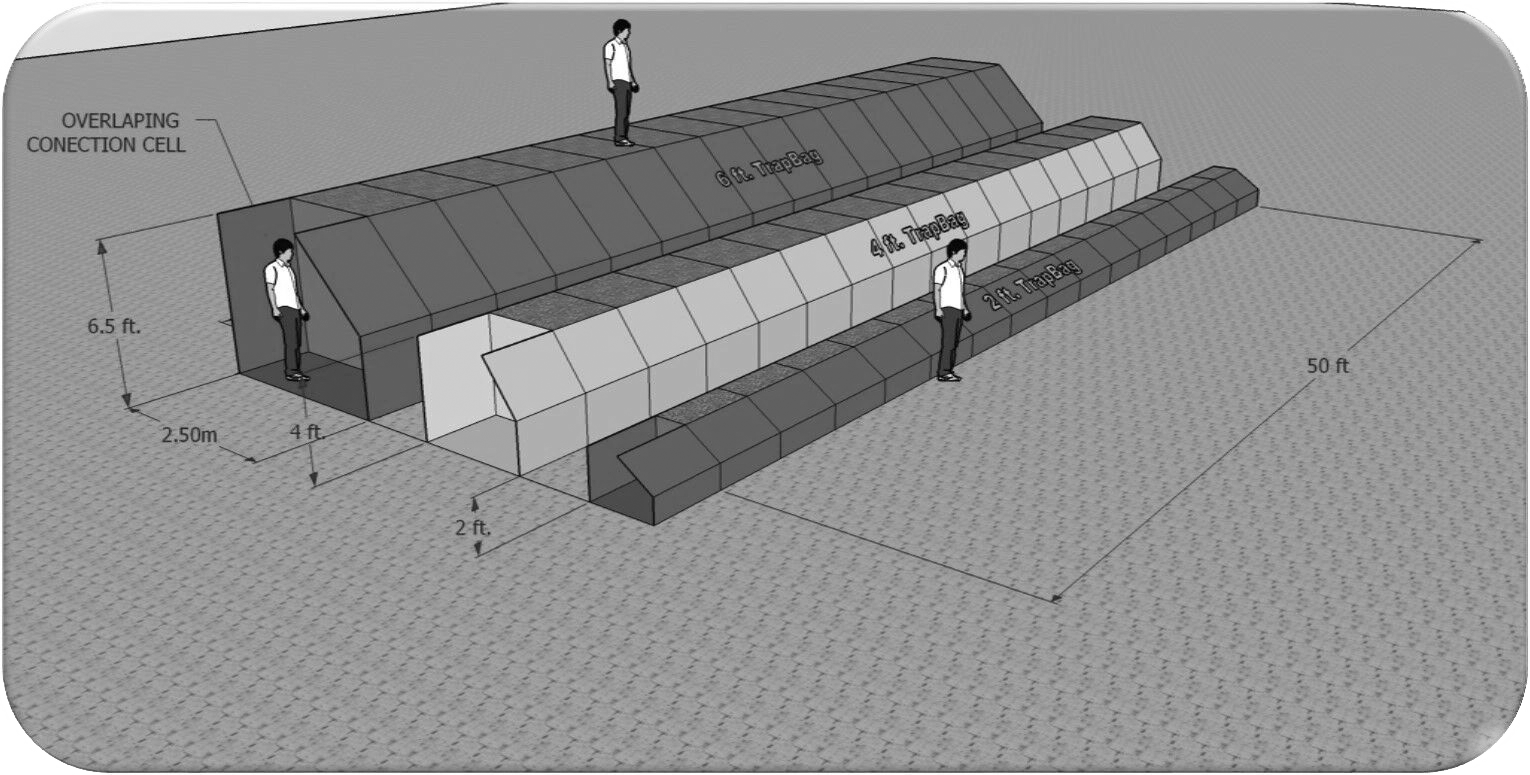TrapBag® is a low cost, rapid deploy flood and erosion control barrier bag similar to, yet superior than, conventional sandbags. Our bags are designed to protect life and property from natural disasters such as flash flooding, mudslides, mud flows, levee breaches and storm surge. TrapBag® is versatile and may be used for other kinds of protection from security barriers to storm-water control.
TrapBag® is a series of pentagon-shaped bags that are sloped on one side, vertical on the opposite side and open at the top for filling. Each of the cells are connected side by side like an accordion, each cell has a common wall with the next cell, and are collapsed during storage and deployment. The cells are made of high-strength textile. Each of the cells are self-contained yet rely on the next cell for added strength. If one of the cells is compromised, it will not affect the rest of the barrier, which will remain standing strong.



